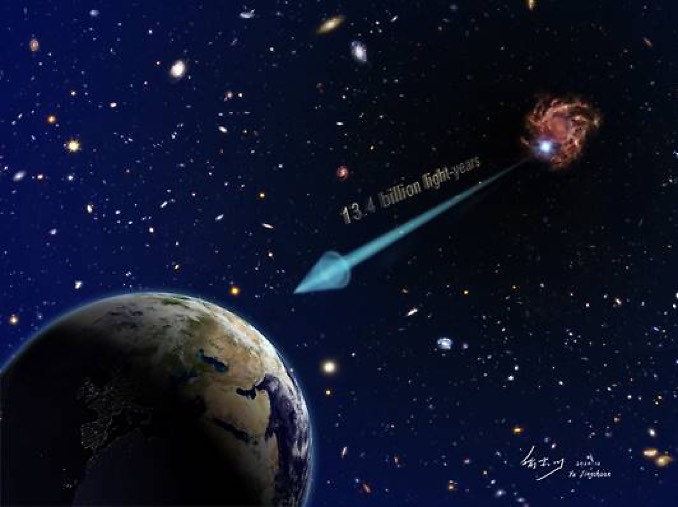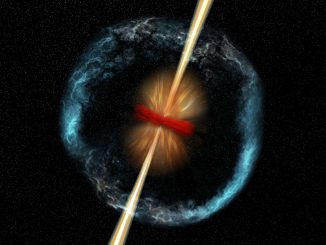
An international team of astronomers has confirmed the most-distant known galaxy is, in fact, a mind-boggling 13.4 billion light years away, indicating it was shining just 400 million years or so after the Big Bang.
As an added bonus, the team spotted the brief ultraviolet flare of a powerful gamma ray burst in the remote galaxy, a phenomenon never before seen in the extremely early universe.
“The more we learn about the universe’s earliest objects, the better we can understand how the structure of our cosmos was shaped,” said Carnegie researcher and team member Gregory Waith. The observations are described in two papers published in the journal Nature Astronomy.
Discovered in space telescope data, the galaxy, known as GN-z11, already was considered the most distant astrophysical object found to date. Astronomers using the Keck 1 telescope at the W.M. Keck Observatory in Hawaii have now carried out a deep spectroscopic analysis, finding higher-than-expected concentrations of elements heavier than hydrogen and helium.
Along with helping confirm the galaxy’s distance, the spectra would seem to rule out a first-generation galaxy, one in which massive first-generation stars had not had time to live their lives, explode and seed the environment with the heavier elements seen in GN-z11. How the galaxy fits into the early stages of cosmic evolution remains to be seen.



